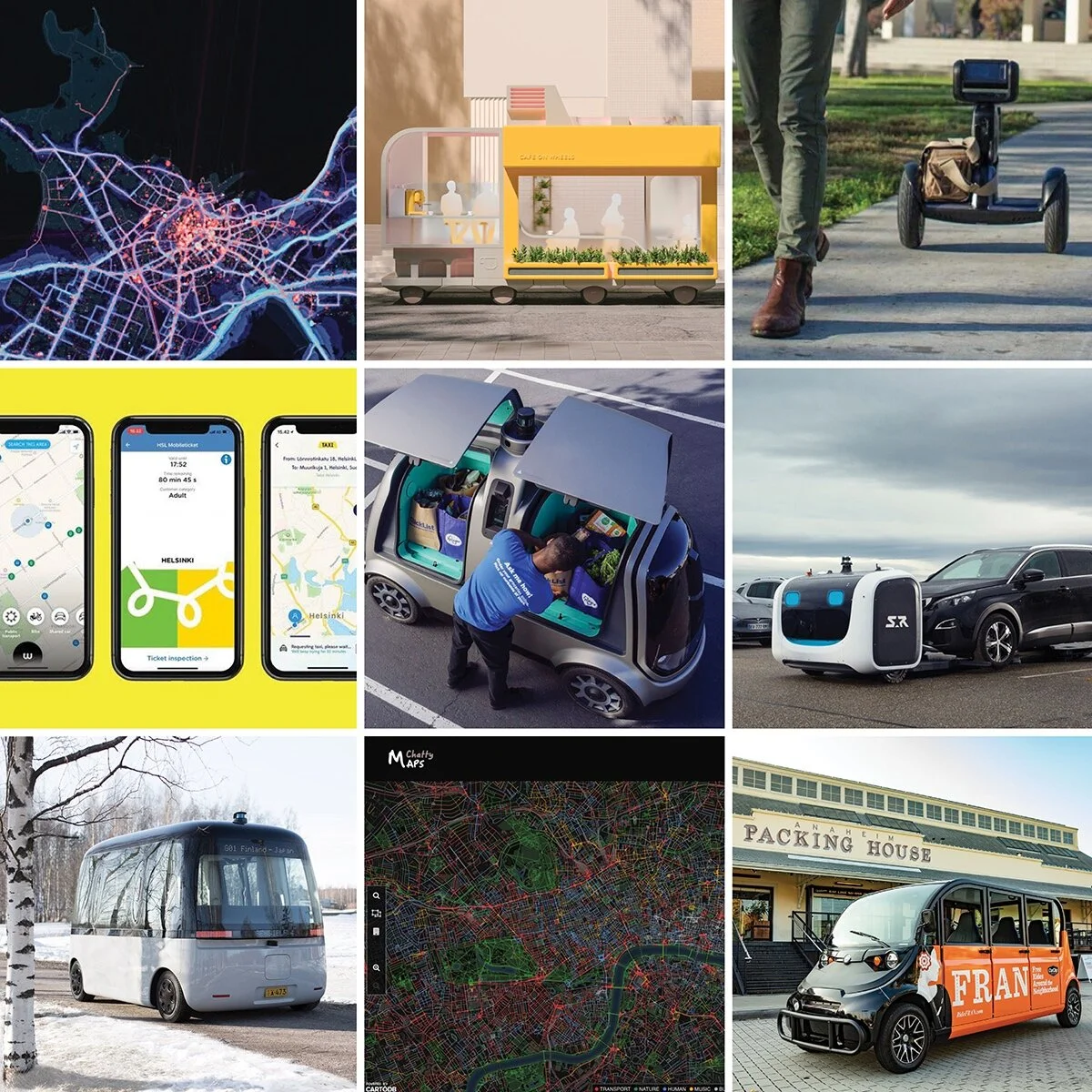Spotting the Future of Public Transportation
Brightspots from left to right: Spin Unit, Studio10, Loomo, Whim, Nuro, Robot Valet, Gacha, Good City Life, FRAN.
When working with a Silicon Valley client to define the future of public transportation, we knew the mobility landscape was being redefined on an almost daily basis. Data points, blockchain, autonomous vehicles, and emotional wellbeing were just some of the dynamics shifting how people reach their destination (or in some cases, bring their destination to them).
To help the team understand the global evolution taking place, we pulled together a small library of Brightspots showcasing the future of transportation today. In addition to creating a shared knowledge base, the collection helped bring a new framework to how the team would define their vision.
With each example we found, we asked ourselves a series of questions to help shift our perspective on the challenge at hand.
What’s interesting, surprising, provocative? What norm/sacred cow is it challenging?
What’s driving the change? User needs, culture shift, values shift, policy shift, etc.?
What could give it momentum, scale it up?
What is the bigger trend?
What connections can we find between Brightspots?
What could this mean for our challenge (product, industry, org)?
Curious to learn what Brightspots are redefining your industry? Get in touch.
Here are some of the Brightspots we found that hint at the global evolution in transportation:
SPIN UNIT
Spin Unit uses blockchain to create a ‘mobility marketplace’ connecting public transportation operators and private services, providing seamless service for riders and shared customer data for operators.
SPACE10
Space10 asks what happens when, rather than move people to their destination, we bring destinations to the people? Their model is an experiment with 10 different mobile spaces including a cafe, workspace, and even healthcare.
LOOMO
Part personal assistant, part segway, and part pack mule, the Loomo is an AI powered Segway with a limited hauling capacity and ability to follow its owner through a variety of obstacles.
WHIM
Between scooter rentals, ride-shares and public transit, travelers can be overwhelmed with managing apps and payment methods. Whim provides travelers with a single point for both trip planning and an integrated payment system.
NURO
Home delivery services add vehicles to already congested streets. Nuro is an autonomous delivery vehicle being tested in Arizona. To date, Nuro has made thousands of successful grocery deliveries for Kroger grocery stores.
ROBOT VALET
France's Lyon-Saint Exupéry Airport has eliminated the hassle of finding a parking spot before your next flight. Among the benefits of eliminating humans from the parking process: smaller parking spaces, optimizing real estate and time management.
GACHA
One major hurdle to the on-demand bus services that have seen a series of closures in the last year is staffing costs. Enter Gacha, an autonomous mini-bus in Finland. Gacha is able to traverse a variety of terrains and weather conditions that pose a barrier to autonomous services.
GOOD CITY LIFE
Current navigation apps assume travel is motivated by efficiency. Data scientists at Good City Life set out to gather data to explore the possibility of routing services based on happiness, aroma, and conversation quotients in plotting routes at minimal time expense.
FRAN
FRAN provides on-demand service to a geofenced service-area within downtown Anaheim. The service does not follow fixed routes. Riders can choose to begin & end their trips at one of ten predefined stops near popular destinations.

